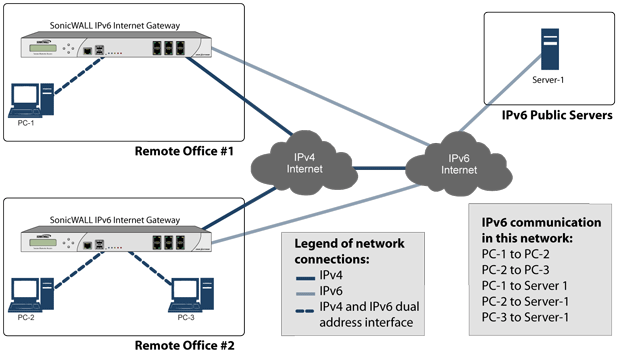Every device that is connected to the Internet (computer, printer, smart phone, smart meter, etc.) requires an IP address. The Internet Protocol version 4 (IPv4) provides for approximately 4.3 billion unique IP addresses. The rapid global expansion in usage of the Internet, mobile phones, and VoIP telephony will soon lead to the exhaustion of these 4.3 billion IP addresses.
On February 3rd, 2011, the Internet Assigned Numbers Authority (IANA) distributed the last-remaining blocks of IPv4 addresses to the Regional Internet Registries (RIRs). After the RIRs distribute these addresses to ISPs later this year, the world’s supply of new IPv4 addresses will be exhausted.
Luckily, the Internet Engineering Task Force (IETF) began planning for this day back around 1992, and in 1998, RFC 2460 was published to define Internet Protocol, Version 6 (IPv6). By increasing the address length from 32 bits to 128 bits, IPv6 dramatically increases the number of available addresses compared to IPv4:
|
•
|
IPv6: 340,282,366,920,938,463,463,374,607,431,768,211,456 addresses
|
IPv6 addresses are written in eight groups of four hexadecimal digits separated by colons, in the form:
XXXX:XXXX:XXXX:XXXX:XXXX:XXXX:XXXX:XXXX
IPv6 addresses are logically divided into two parts: a 64-bit (sub-)network prefix, and a 64-bit interface identifier. Here is an example of an IPv6 address:
2001:0db8:85a3:0000:0000:8a2e:0370:7334
IPv6 address can be abbreviated using the following two rules:
|
•
|
2001:0db8:85a3: 0000:0000:8a2e: 0370:7334
|
to this abbreviated form:
|
•
|
2001:db8:85a3: 0:0:8a2e: 370:7334
|
|
•
|
2001:0db8:85a3: 0000:0000:8a2e: 0370:7334
|
to this abbreviated form:
|
•
|
2001:db8:85a3 ::8a2e: 370:7334
|
Here is a simplified picture showing connectivity model for a typical IPv6 deployment.
Typical IPv6 Deployment

The following diagram shows a comparison of the header elements between IPv4 and IPv6.
IPv4 and IPv6 Header Element Comparison
